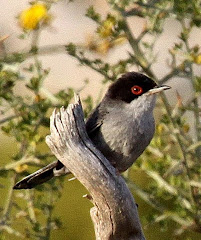Being conveniently close to the route home and as there had been no reports for two days, another check was made to see if the single male Dotterel and Golden Plovers were still in their field alongside Abbeystead Lane. A slight surprise therefore to find two female Dotterel in just the same place and again mixed in amongst the plovers but this time there was no sign of last week's male.
The birds were still very distant which made photography difficult
.jpg)
.jpg)
There are several square kilometres of contiguous and seemingly identical upland pasture in this immediate area but the Dotterel and plovers have always remained within a very small part of it, no more than 100 metres in diameter. Even when flushed by a low-flying aircraft, all the birds returned to the same spot. They've been there now for at least a week so presumably there is very rich feeding. Lapwings and Meadow Pipits were again present and a Marsh Harrier briefly appeared nearby.
.jpg)
.jpg)
.jpg)
.jpg)
.jpg)
.jpg)
.jpg)
.jpg)
.jpg)
.jpg)
.jpg)
.jpg)

.jpg)
.jpg)
.jpg)
.jpg)
.jpg)
.jpg)
.jpg)
.jpg)
.jpg)
.jpg)
.jpg)
.jpg)
.jpg)
.jpg)
.jpg)
.jpg)
.jpg)
.jpg)
.jpg)
.jpg)
.jpg)
.jpg)
.jpg)
.jpg)
.jpg)



